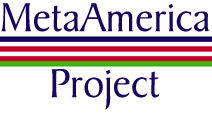 |
|
|
|
 |
 |
|
|
Note: In October of 1987 the Arizona Department of Transportation published a report regarding the location of a Metro Regional Jetport. While that data is now outdated it remains the most complete analysis of the factors involved in positioning a multi-modal transportation facility able to accept commercial spacecraft as well as transoceanic jet planes. While continuing development changes the availability of lands, many other factors remain the same. Discussion in this section will use that report as the basis of most statements and every effort will be made to update as better information is available.
Concept Statement from the Metro Regional Jetport Location Search of 1987
Due to year around favorable climatic conditions and a rapidly growing economy, aviation in this region continues to grow at twice the national average. The rapid growth in commercial air traffic, combined with increasing use of limited airspace, growing environmental concerns in the region, and desire to maintain the quality of life has compelled Arizona to implement a visionary and bold new concept in airport development. This concept seeks to optimize the economic opportunities for Arizona by stimulating the foreign trade balance in favor of the Unite States. The implementation of the proposed concept will have international impact and will provide a dramatic demonstration of public and private sector partnership, regional development and state-of-the-art transportation systems. This concept includes:
- The development of an international jetport (freight and passengers) to serve the aviation needs of the southwestern United States;
- The development of adequate facilities for the Arizona National Guard and Air Force;
- The potential of providing emergency landing facilities for the Space Shuttle;
- The development of a linear transportation corridor utilizing high speed rail technology to link each major metropolitan area with the international jetport with portal to portal time of less than twenty minutes;
- The development of a multi-modal freight transportation hub;
- Support for a the development of an international aerospace high-technology/electronic industrial park, including a free trade zone adjacent to the international jetport.
The international jetport would be planned and designed to potentially accommodate the existing Marana army operations and Tucson Air National Guard activities as well. It is anticipated that the development of this jetport (henceforth referred to as the Metro Regional Jetport or MRJ) will be evolutionary and its role will be to supplement Phoenix Sky Harbor International Airport and Tucson International Airports. The MRJ will will not compete with these airports. It will seek out only those airlines and air travel markets which have not yet been attracted by these two airports. Initially the MRJ will focus on multi-modal freight movement and the industrial development near the site. |
|
 |
 |
|
SpaceHarbor Concept Statement
Due to year around favorable climatic conditions and a rapidly growing economy, aviation in this region continues to grow at twice the national average. The rapid growth in commercial applications for space industries and related air traffic, combined with increasing use of limited airspace, growing environmental concerns in the region, and desire to maintain the quality of life has compelled Arizona and the United States to implement a visionary and bold new concept in combined space and airport development. This concept seeks to optimize the economic opportunities for Arizona by stimulating the foreign trade balance in favor of the Unite States. The implementation of the proposed concept will have international impact and will provide a dramatic demonstration of public and private sector partnership, regional development and state-of-the-art transportation systems. This concept includes:
- The development of an international space and airport (freight and passengers) to serve the space/aviation needs of the southwestern United States and northwestern Mexico;
- The development of adequate facilities for the Arizona National Guard and Air Force;
- The provision of landing facilities for the Space Shuttle and similar Spacefreight Shuttles
- The development of a linear transportation corridor utilizing high speed rail technology to link each major metropolitan area with the international space/airport with portal to portal time of less than forty minutes;
- The development of a multi-modal freight transportation hub;
- Support for a the development of an international aerospace high-technology/electronic industrial park, including a free trade zone adjacent to the international space/airport.
The international space/airport would be planned and designed to potentially accommodate the existing Marana army operations and Tucson Air National Guard activities as well. It is anticipated that the development of this space/airport (henceforth referred to as the SpaceHarbor or SH) will be evolutionary and its role will be to supplement Phoenix Sky Harbor International Airport and Tucson International Airports. The SH will will not compete with these airports. It will focus on Space industries and related development opportunities and seek out only those airlines and air travel markets which are not attractive to these two airports. Initially SpaceHarbor will focus on multi-modal freight movement and the industrial development near the site. |
 |
 |
|
Copyright © Dane M Arr 2001 All rights reserved.
ABOUT THIS WEB SITE: The MetaAmerica Project web site is an ongoing effort to facilitate discussion about the long term potential of the US/Mexico and Arizona/Sonora economic development relationship. Planned additions to this site include discussion groups and consortia pages. The idea of consortia is rooted in the economic opportunity inherent in the investment required to develop the region, and the many significant technologies needed to do it.
If you or your organization are interested in discussing these ideas on an e-group mailing list, please send a message.
|
|
 |
 |
 |
|
 |
 |
 |
 |
|
|
|
Estimated costs of construction:
46.5 Billion Dollars US
Space Harbor
20 Billion $US
Corridor to Sea
Puerto Penasco EDD
Cortez Coastal Carriers
OTECortez
Click to See Consortia Pages |
|
|
|
|
 |
|
|
|
This area for links to related information... |
|
|

